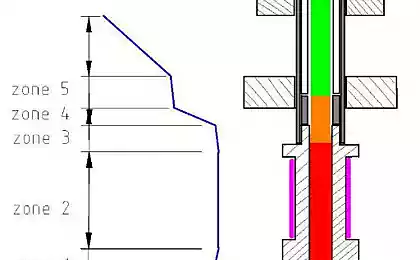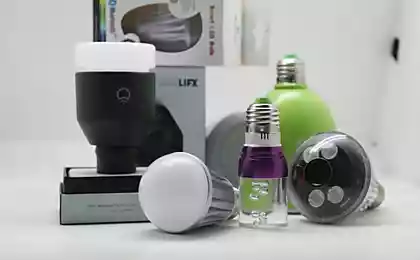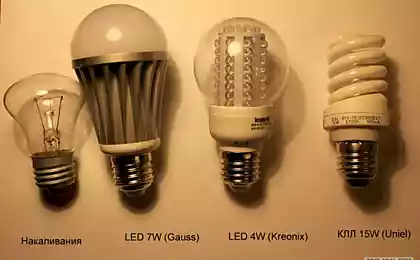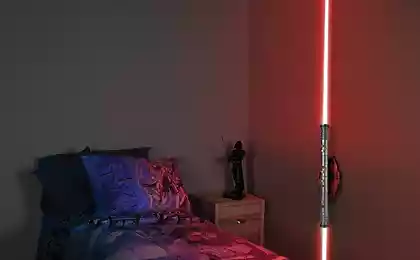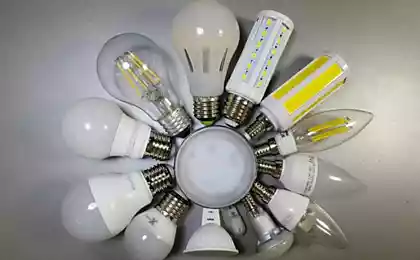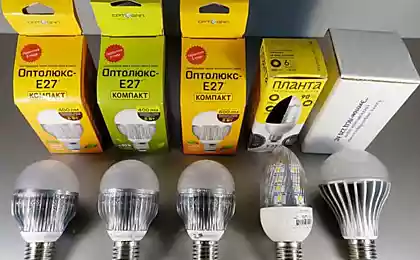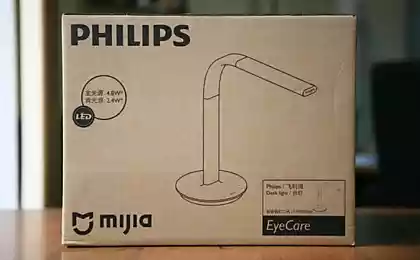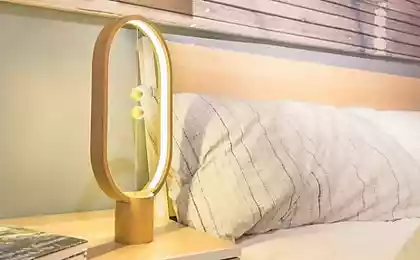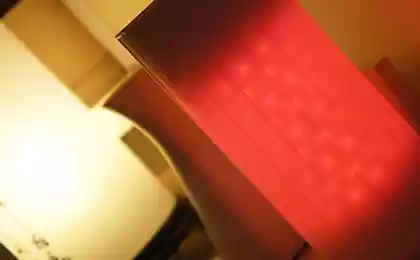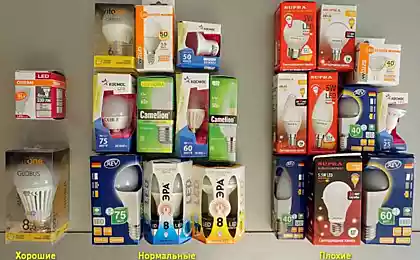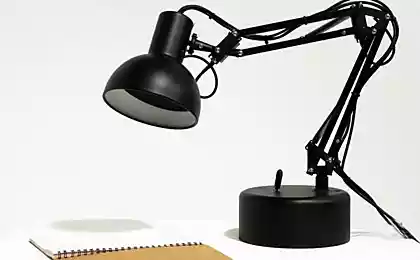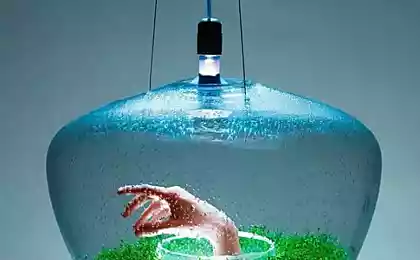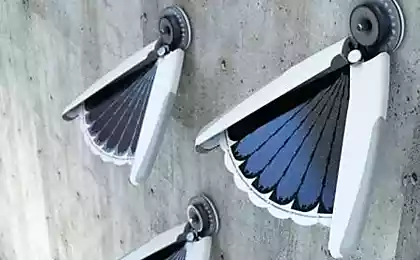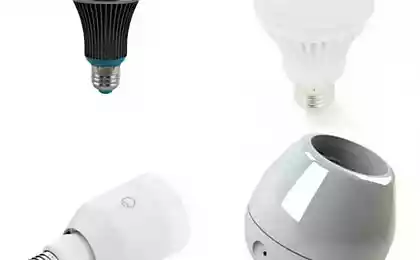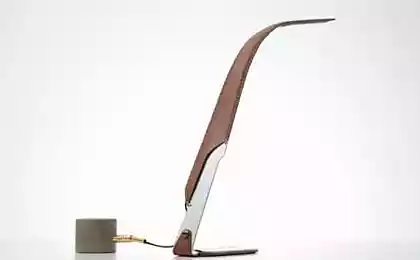413
Mysterious and delicate filament
With all the variety of light sources, a hefty portion of humanity, as it turned out, from the point of view of design still prefer the incandescent lamp. The filament of the lamp is the most important element of visual appeal. Therefore, the appearance of Filament LED Bulb – elegant and virtually indistinguishable from an incandescent filament led lamps was greeted very warmly.
The name bulb comes from the English word filament – the filament. Since the light sources are LEDs, the full Russian name of the source of light, the "led filament lamp" (FSL).
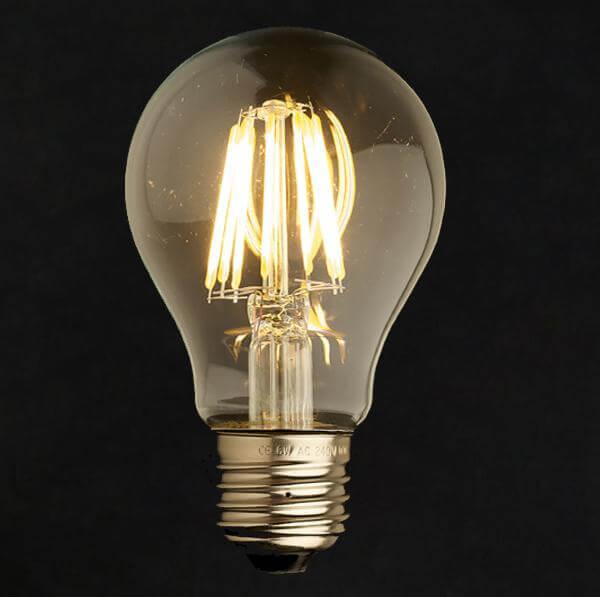
Invented filament lamps in Japan in 2008, did this company Ushio. The Japanese are very sensitive to every object in the house, and it is clear that just "bury" the incandescent lamp, they could not. Externally devised FSL did not differ from the usual bulb, and if not too weak luminous flux, probably would have conquered the whole world. However, the use of FSL first for General lighting was not possible, and they were used purely for decorative purposes.
The birth of the FSL was motivated by purely aesthetic feelings. But, with all resemblance with incandescent lamps, structurally it is completely different form lamps. That, however, did not prevent the invention of the Japanese to become clear for their neighbors from China. Enterprising Chinese drew attention to the delicate filament bulb, clear in their design, worked on it and in 2013 presented the FSL in the embodiment, where the luminous flux was already equivalent to the light flux of incandescent lamps of 60 watts.
The construction of filament
In FSL used the technology of Chip-on-Glass, commonly used in the production of displays for mobile devices: miniature LEDs are placed on a substrate of a special kind of glass. The transparency of the substrate determines the basic properties of the filament – the ability to illuminate in all directions.
Standard filament thin like a candle with a diameter of 1.5 mm and a length of 3 cm, the Total number of LEDs in one filament 28. Usually this LEDs blue glow, at least – with the addition of red (warmer color temperature); they are connected in series. On top of their covers the phosphor layer.
Power consumption from a single filament of 0.8-1.3 wt. FSL are produced today with the number of filaments from 2 to 16. The increase in the number of filaments leads to an increase in the size of the lamp, because otherwise, there is overheating of the glass bulb. The heat sink of FSL is carried out through a special gas that filled the bulb and part of which the manufacturers prefer not to disclose (although it is believed that this helium). However, despite the effectiveness of the heat sink, the number of filaments cannot be increased indefinitely.
The parameters of FSL
The most common to date version of FSL is light with the usual bulb A60, 2700K color temperature, luminous flux of 980 lumens (similar to incandescent lamp power of 85 W) or 1500 lumens in a bulb of larger size – 95 mm, 116-150 luminous efficiency LM/W colour rendering index CRI 90 and lifespan from 10000 to 30000 hours. Socket size E27 and E14. An example of such a bulb: E27 SD
All FSL connected directly to the lighting network, low-voltage models no.
The price of filament lamp varies from 200 to 500 rubles.
"And the Sun has spots..."
The disadvantages of FSL traditionally include the absence in the lamp a good driver, since space is limited. This leads to high ripple. Driver with low ripple factor for this miniature bulb and substantially increases the cost of construction. Some manufacturers in order to avoid surge, install an additional ceramic ring between the bulb and cap under a full-fledged driver.
An integral element of the constructive – glass bulb. For some, this is a huge plus. But in the eyes of practical people and not nostalgic for incandescent lamps, the fact that FSL beats (in contrast to the widespread today other led bulbs) is a big minus. It means that the manufacturer only works for a certain category of consumer.
However, today FSL is produced not only by the Chinese. Russian "Lisma" happy to take the case. A new plant for the manufacture of filament lamps will soon be opened in Ingushetia. It is clear that manufacturers will seek to improve the technical properties of products. This means that aesthetes all over the world in the near future will be very happy with the lamps, combining modernity and historically glorious form. published
P. S. And remember, only by changing their consumption — together we change the world! ©
Join us in Facebook , Vkontakte, Odnoklassniki
Source: ieport.ru/stat/132830-zagadochnyj-i-nezhnyj-filament-statya.html
The name bulb comes from the English word filament – the filament. Since the light sources are LEDs, the full Russian name of the source of light, the "led filament lamp" (FSL).

Invented filament lamps in Japan in 2008, did this company Ushio. The Japanese are very sensitive to every object in the house, and it is clear that just "bury" the incandescent lamp, they could not. Externally devised FSL did not differ from the usual bulb, and if not too weak luminous flux, probably would have conquered the whole world. However, the use of FSL first for General lighting was not possible, and they were used purely for decorative purposes.
The birth of the FSL was motivated by purely aesthetic feelings. But, with all resemblance with incandescent lamps, structurally it is completely different form lamps. That, however, did not prevent the invention of the Japanese to become clear for their neighbors from China. Enterprising Chinese drew attention to the delicate filament bulb, clear in their design, worked on it and in 2013 presented the FSL in the embodiment, where the luminous flux was already equivalent to the light flux of incandescent lamps of 60 watts.
The construction of filament
In FSL used the technology of Chip-on-Glass, commonly used in the production of displays for mobile devices: miniature LEDs are placed on a substrate of a special kind of glass. The transparency of the substrate determines the basic properties of the filament – the ability to illuminate in all directions.
Standard filament thin like a candle with a diameter of 1.5 mm and a length of 3 cm, the Total number of LEDs in one filament 28. Usually this LEDs blue glow, at least – with the addition of red (warmer color temperature); they are connected in series. On top of their covers the phosphor layer.
Power consumption from a single filament of 0.8-1.3 wt. FSL are produced today with the number of filaments from 2 to 16. The increase in the number of filaments leads to an increase in the size of the lamp, because otherwise, there is overheating of the glass bulb. The heat sink of FSL is carried out through a special gas that filled the bulb and part of which the manufacturers prefer not to disclose (although it is believed that this helium). However, despite the effectiveness of the heat sink, the number of filaments cannot be increased indefinitely.
The parameters of FSL
The most common to date version of FSL is light with the usual bulb A60, 2700K color temperature, luminous flux of 980 lumens (similar to incandescent lamp power of 85 W) or 1500 lumens in a bulb of larger size – 95 mm, 116-150 luminous efficiency LM/W colour rendering index CRI 90 and lifespan from 10000 to 30000 hours. Socket size E27 and E14. An example of such a bulb: E27 SD
All FSL connected directly to the lighting network, low-voltage models no.
The price of filament lamp varies from 200 to 500 rubles.
"And the Sun has spots..."
The disadvantages of FSL traditionally include the absence in the lamp a good driver, since space is limited. This leads to high ripple. Driver with low ripple factor for this miniature bulb and substantially increases the cost of construction. Some manufacturers in order to avoid surge, install an additional ceramic ring between the bulb and cap under a full-fledged driver.
An integral element of the constructive – glass bulb. For some, this is a huge plus. But in the eyes of practical people and not nostalgic for incandescent lamps, the fact that FSL beats (in contrast to the widespread today other led bulbs) is a big minus. It means that the manufacturer only works for a certain category of consumer.
However, today FSL is produced not only by the Chinese. Russian "Lisma" happy to take the case. A new plant for the manufacture of filament lamps will soon be opened in Ingushetia. It is clear that manufacturers will seek to improve the technical properties of products. This means that aesthetes all over the world in the near future will be very happy with the lamps, combining modernity and historically glorious form. published
P. S. And remember, only by changing their consumption — together we change the world! ©
Join us in Facebook , Vkontakte, Odnoklassniki
Source: ieport.ru/stat/132830-zagadochnyj-i-nezhnyj-filament-statya.html
